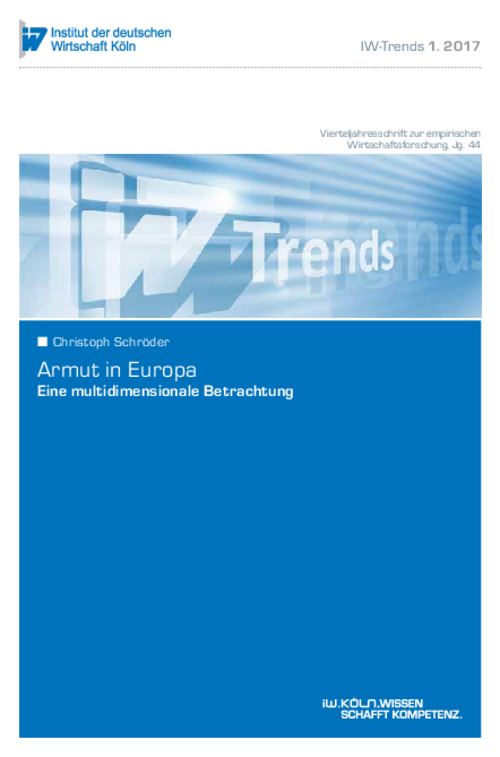When discussed in public, poverty is often equated with relative income poverty. However, to define poverty exclusively in terms of low income is to see it too narrowly.

Poverty in Europe: A Multi-dimensional Approach
IW-Trends

When discussed in public, poverty is often equated with relative income poverty. However, to define poverty exclusively in terms of low income is to see it too narrowly.
The at-risk-of-poverty rate, the proportion of the population earning less than 60 per cent of the median household income, is actually a very specific measure of income inequality. The Czech Republic fares best on this indicator, while with rates between 21 and 25 per cent the Baltic states, Greece, Spain, Romania and Bulgaria come out worst. Germany has a slightly below-average at-risk-of-poverty rate, putting it in the middle of the ranking. The EU defines as poor anyone forced by lack of resources to accept a lower standard of living. So-called consistent poverty is calculated as a combination of relative income poverty and material deprivation and therefore meets the EU definition. Alternatively, poverty can be measured as a lack of capabilities and opportunity for self-fulfilment. In the present study, the factors considered are income, material deprivation, education, gainful employment, housing and housing environment, and health, with the indicators for these factors being summarized in a multi-dimensional poverty index. The index ranks Norway, Sweden and Switzerland highest, with Bulgaria, Romania and Greece bring up the rear, a result similar to that for consistent poverty. In Germany, the poverty rate based on the two measures is considerably lower than the EU average. Subjective income poverty also correlates closely with the two multidimensional poverty measures. This makes the latter more suitable for depicting reduced circumstances and also more appropriate for setting policy goals in the fight against poverty.

Christoph Schröder: Armut in Europa – Eine multidimensionale Betrachtung
IW-Trends

More on the topic

A Macroeconomic Analysis of Wage-Price Spirals
The subject of this Analysis is the forms that wage-price spirals can take and how they influence macroeconomic stability and inflationary trends in Germany.
IW
IW Distribution Report 2023: Attitudes towards social mobility
Fundamentally linked to the social market economy is the idea that everyone has the opportunity for social advancement, regardless of their social background, and that children should be better off than their parents.
IW